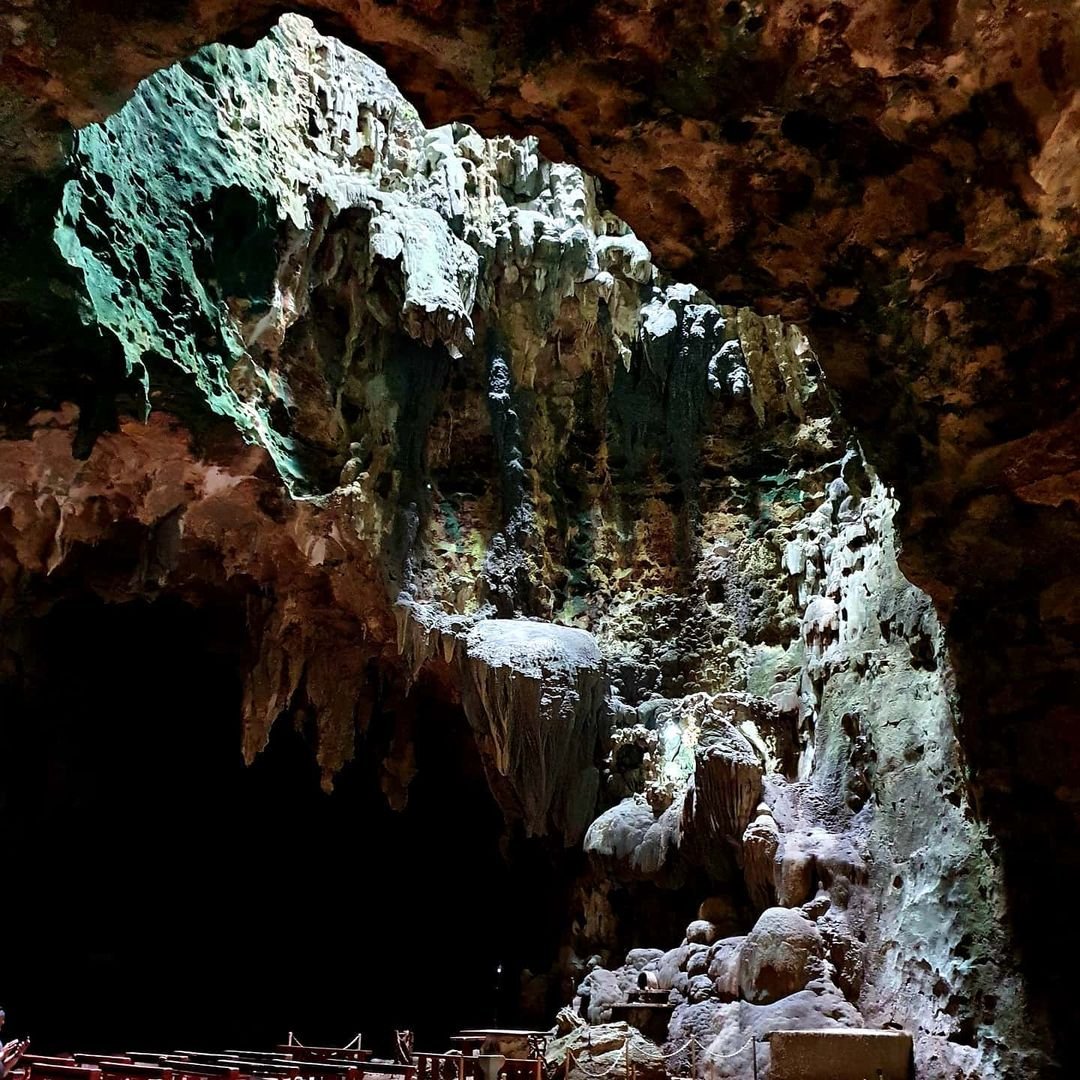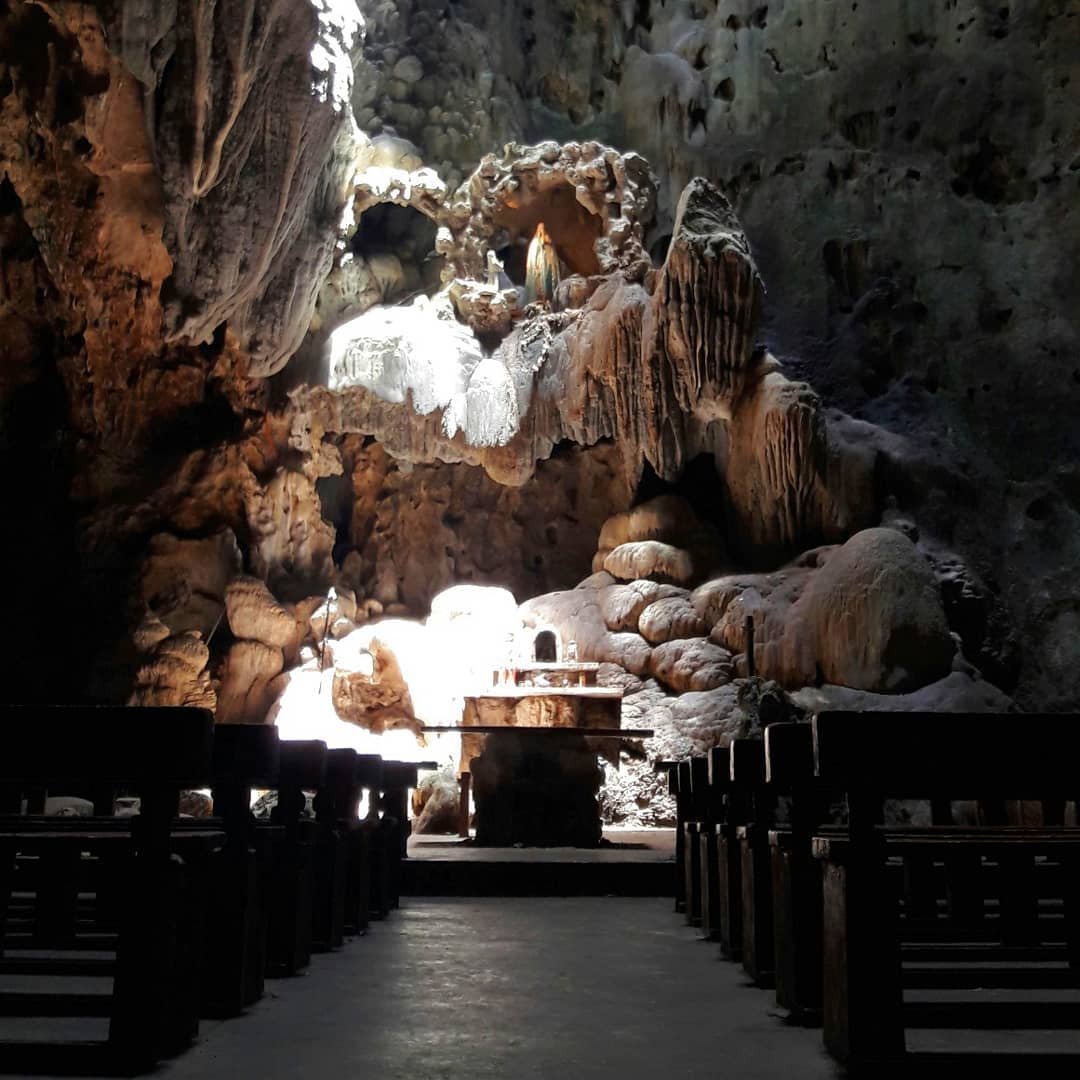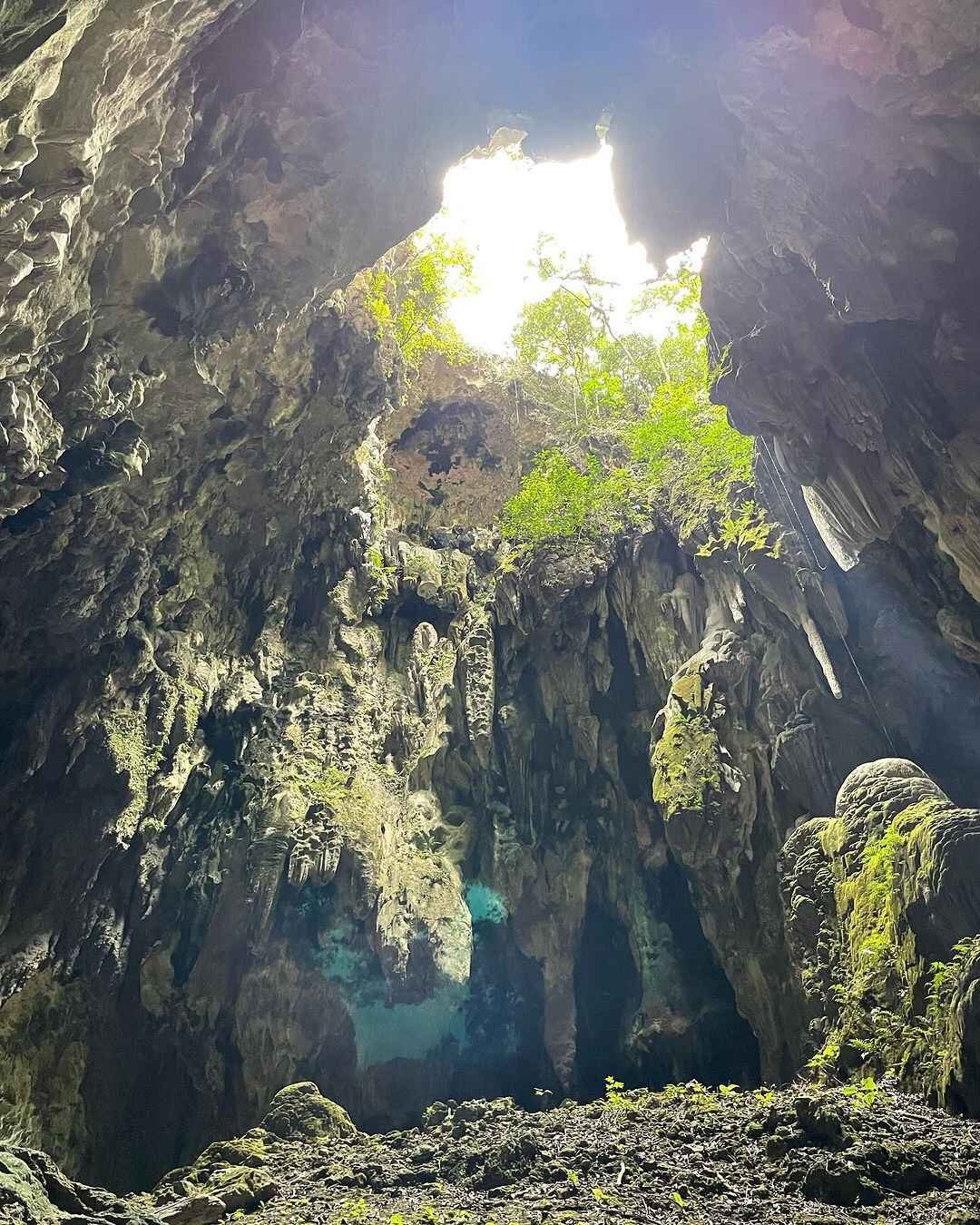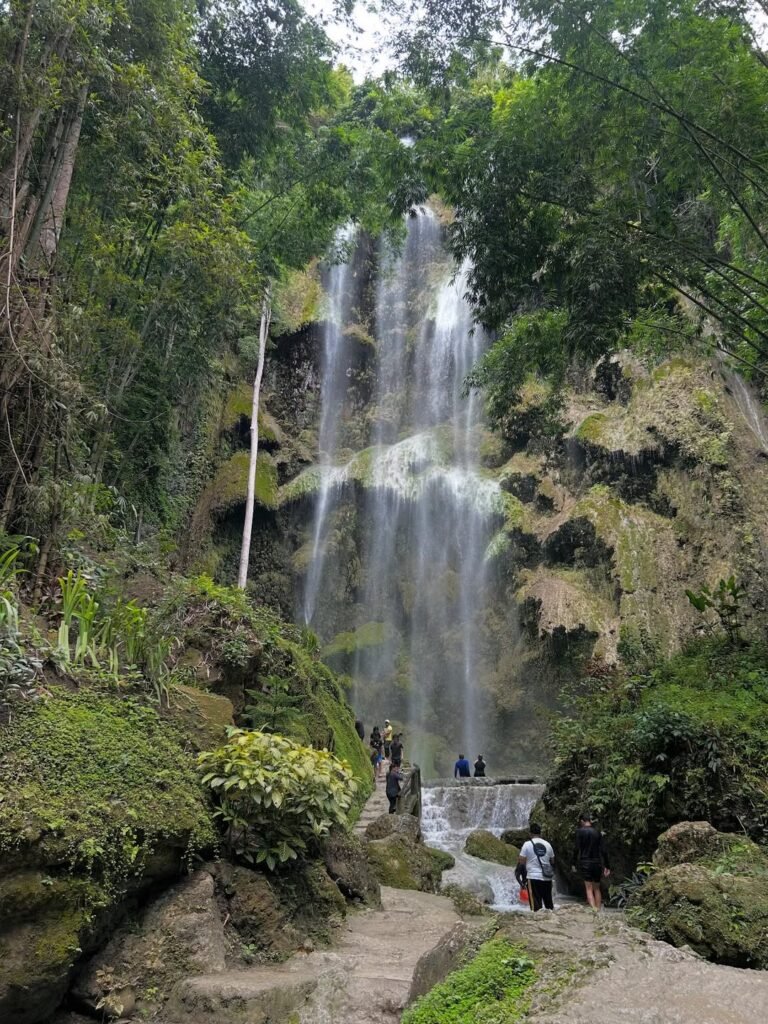
Located in the rugged landscape of Peñablanca, Cagayan, Callao Cave stands out as one of the Philippines’ most breathtaking natural and historical landmarks. Known for its impressive seven chambers with stunning limestone formations, Callao Cave captivates visitors from around the world who come to marvel at its beauty and immerse themselves in its rich history. Each chamber reveals unique features, with one of the most famous being the Callao Cave chapel, where natural light filters through an opening in the ceiling, creating a serene atmosphere perfect for reflection or even intimate gatherings.
Beyond its natural allure, Callao Cave in Cagayan holds profound archaeological significance. The cave gained international attention with the discovery of the Callao Man, a set of ancient human remains estimated to be around 67,000 years old. This groundbreaking find marks Callao Cave as one of Southeast Asia’s oldest human archaeological sites, adding a layer of historical intrigue that draws researchers, historians, and curious travelers alike.
For those planning a visit, Callao Cave offers not only scenic beauty but also a tangible link to ancient history, inviting visitors to step back in time while experiencing the natural wonders of Cagayan province.
Table of Contents
About Callao Cave in Cagayan
Callao Cave in Cagayan is located in the scenic municipality of Peñablanca, within Cagayan Valley, a region known for its lush landscapes and impressive geological formations. The exact Callao Cave location is in the Peñablanca Protected Landscape and Seascape, an area that preserves the natural beauty and biodiversity of the province. Just a short drive from Tuguegarao City, this cave system is easy to access and has become one of the most popular natural attractions in northern Luzon.
The history of Callao Cave spans thousands of years, both in terms of natural formation and human significance. Formed by ancient geological processes, the cave boasts stunning stalactites, stalagmites, and natural skylights. Its unique seven-chamber structure has become iconic, with each chamber offering something different for explorers—from echoing halls to the tranquil, sunlit space used as a chapel.
However, it is the discovery of the Callao Man that truly distinguishes Callao Cave as an archaeological landmark. In 2007, researchers uncovered a 67,000-year-old foot bone within the cave, belonging to an early human species now known as The Callao Man. This discovery has rewritten parts of the region’s prehistoric history, suggesting that human activity in the Philippines dates back far earlier than previously believed. The Callao Man history not only adds scientific value to the cave but also places it on the global map as one of the oldest sites of human remains in Southeast Asia.
Today, Callao Cave in Peñablanca serves as both a tourist attraction and a site of ongoing archaeological interest. Visitors are drawn not only to its natural beauty and serene surroundings but also to its role in unraveling the story of early humans in the Philippines.

Exploring the 7 Chambers of Callao Cave
One of the most captivating aspects of Callao Cave is its unique structure, featuring 7 chambers that each offer distinct characteristics and beauty. These chambers are natural wonders that attract travelers, photographers, and even couples seeking a memorable setting for special events. Below is a detailed description of Callao Cave’s chambers and the highlights within each that make them so extraordinary.
As visitors journey through the 7 chambers of Callao Cave, they’ll encounter awe-inspiring limestone formations, each chamber unfolding something new. The first chamber is the most famous due to its impressive Callao Cave chapel, a tranquil space where a natural skylight from above illuminates the altar area. This chapel is not only a place for quiet reflection but has also become a sought-after location for intimate ceremonies and gatherings. The spiritual atmosphere created by the filtered light and the vastness of the cave makes it an unforgettable experience for visitors and worshippers alike.
As travelers continue to explore the remaining chambers of Callao Cave, they will be treated to a series of picturesque scenes—each chamber showcasing different formations of stalactites, stalagmites, and natural rock patterns. Some chambers have dramatic heights and echoing acoustics, while others feel more enclosed and intimate, adding to the mystique of the journey through the cave.
For photography enthusiasts, Callao Cave photos are a must, especially in areas where sunlight pours through openings in the ceiling, casting surreal beams across the rock surfaces. Some of the best photo spots within the cave include:
- The Callao Cave chapel, where the natural skylight creates a striking contrast with the stone altar below.
- Chambers with clusters of limestone formations and textured walls that appear otherworldly.
- Narrow passageways that provide dramatic framing for photographs, highlighting the cave’s natural architecture.
Each of the 7 chambers of Callao Cave offers unique scenic highlights, making it easy for visitors to capture stunning images and create lasting memories. Whether visitors come for the history, the serenity of the chapel, or the scenic views perfect for photography, Callao Cave’s chambers offer an extraordinary adventure in every corner.

Planning Your Visit to Callao Cave
Planning ahead for your Callao trip helps ensure a smooth, enjoyable visit. Here’s all you need to know, including Callao Cave entrance fee, opening hours, how to get to Callao Cave, and estimated travel expenses.
Callao Cave Entrance Fee and Opening Hours
Visitors pay a small Callao Cave entrance fee that supports the preservation of this historical site. Current fees are approximately PHP 20 for local tourists and PHP 100 for international visitors, though it’s wise to bring a little extra cash in case of adjustments.
The Callao Cave opening hours are from 8:00 AM to 5:00 PM daily, allowing ample time to explore the cave’s seven chambers. Arriving early, especially on weekends and holidays, is ideal to avoid crowds.
How to Get to Callao Cave
Callao Cave is located in Peñablanca, Cagayan, around 24 kilometers from Tuguegarao City. Here are your options for reaching the cave from Manila and the nearby Cagayan Airport, along with estimated costs.
From Manila by Bus:
The most economical option from Manila is by bus to Tuguegarao City. Major bus lines like Victory Liner and Florida Bus operate on this route. A one-way ticket costs between PHP 800 and PHP 1,000, with travel times from 12 to 15 hours. Once in Tuguegarao, you can take a tricycle (PHP 150-200) or hire a van (PHP 800-1,000) to reach Callao Cave in about 30-45 minutes.From Cagayan Airport:
For a quicker trip, flights from Manila to Tuguegarao Airport are available, with ticket prices typically between PHP 3,000 and PHP 5,000 for a round trip. After landing, a taxi or tricycle from Tuguegarao Airport to Peñablanca takes about 30-45 minutes, costing around PHP 200-300 for tricycles or PHP 800-1,000 for a private van.
Best Routes and Estimated Travel Expenses
Here’s a quick summary of the routes with estimated travel times and costs:
- From Manila by bus: 12-15 hours to Tuguegarao (PHP 800-1,000), plus 30-45 minutes to Callao Cave (PHP 150-200 by tricycle).
- From Cagayan Airport: 1 hour and 15 minutes by air from Manila (PHP 3,000-5,000 round trip), followed by a 30-45 minute ride to the cave (PHP 200-300 by tricycle).
Overall, planning your travel expenses and timing in advance will let you focus on enjoying Callao Cave’s natural beauty and historical intrigue, without surprises.
Best Time to Visit Callao Cave
Determining the best time to visit Callao Cave can make a significant difference in the quality of your experience. Located in Cagayan Valley, Callao Cave is subject to the typical tropical climate of the Philippines, with a rainy and dry season. Here are some insights on when to visit, as well as essential Callao Cave travel tips for a smooth and memorable adventure.
Ideal Seasons for Visiting Callao Cave
The best time to visit Callao Cave is during the dry season, from November to May. During these months, the weather is generally clear, with minimal rain, making it easier to explore the cave and surrounding areas without worry. Clear skies also enhance the natural light within the cave, especially in the Callao Cave chapel, where sunlight filtering through the ceiling creates a beautiful ambiance. The dry season is also ideal for those interested in visiting nearby outdoor attractions in Peñablanca and the surrounding Cagayan Valley region.
While it is possible to visit during the rainy season (June to October), the likelihood of rain can lead to slippery pathways, and travel from Tuguegarao can become more challenging. For those who prefer a quieter experience, the months of February and March are ideal as they fall between peak tourist seasons and still offer good weather.
DIY Guide to Callao Cave
For those who love independent exploration, this Callao Cave DIY guide provides a step-by-step plan to experience the cave without a formal tour. With the right preparation, a sense of adventure, and attention to a few essential details, a self-guided trip to Callao can be both fulfilling and economical.
Step-by-Step DIY Guide to Callao Cave
Plan Your Transport:
Start your journey to Callao Cave by either taking a bus from Manila to Tuguegarao or a flight to Tuguegarao Airport, as detailed in Section 3. Once in Tuguegarao, take a tricycle or van to the cave entrance in Peñablanca. Tricycles generally cost around PHP 150-200, while van rentals range from PHP 800-1,000.Get a Callao Cave Map:
While there may be maps available at the site, it’s helpful to review or print a Callao Cave map before arrival. The map outlines the layout of the seven chambers, including key landmarks like the Callao Cave chapel. The map can be an excellent guide as you navigate each chamber, giving you a better understanding of what’s ahead.Prepare for the Steps Inside the Cave:
One notable feature of Callao Cave is the series of steps that lead from one chamber to the next. There are roughly 184 Callao Cave steps at the entrance, so sturdy, comfortable footwear is essential. The initial steps are moderately steep, so pace yourself, especially during the climb up to the first chamber. Inside the cave, additional stairs and rocky terrain connect the chambers, so expect some light trekking.Navigating the Seven Chambers:
The cave’s seven chambers are open to visitors and each offers unique formations and characteristics. Here’s a brief guide to the chambers:- First Chamber (Chapel): The most famous chamber, featuring a naturally lit altar with sunlight streaming in through an opening in the ceiling. It’s a perfect spot for photos and moments of reflection.
- Second to Seventh Chambers: Each of the remaining chambers has its own set of rock formations, stalactites, and stalagmites. Look for the narrower pathways and natural rock “sculptures” that make each chamber distinct. A flashlight or headlamp can be helpful for darker areas.
Allocate Time for Photos and Exploration:
The cave’s interior offers many photogenic spots, so be prepared to pause and capture the beauty. Recommended photo locations include the chapel with its iconic skylight, the narrow passageways that frame the limestone formations, and chambers with textured walls. Taking your time through the chambers allows you to fully appreciate each section’s natural beauty.
Accessibility and Additional Tips
- Accessibility: Callao Cave’s steps and uneven terrain mean that it may not be suitable for those with limited mobility. The entrance steps and some interior areas require moderate physical effort, but with the right footwear and a steady pace, it’s manageable for most visitors.
- Essential DIY Packing List: Include a small flashlight, comfortable clothing, a water bottle, and a personal first-aid kit. Given the humidity inside the cave, a towel or handkerchief can be helpful.
- Respect Preservation Efforts: Callao Cave is a protected site, so avoid touching rock formations and always follow any posted guidelines to help preserve its natural state.
This Callao Cave DIY guide allows independent travelers to experience the cave at their own pace, enjoying the adventure without needing a guide. With a bit of planning and a sense of exploration, you’ll be able to fully immerse yourself in the natural and historical wonder of Callao Cave.
Nearby Attractions and Things to Do
A visit to Callao Cave can be enriched by exploring additional nearby attractions in Peñablanca and the greater Cagayan Valley. This region is known for its stunning natural landscapes, rich biodiversity, and other unique cave systems. Here’s an overview of the top attractions around Callao Cave to make the most of your trip.
Peñablanca Caves
Peñablanca is home to numerous caves, each with its own unique features and allure. While Callao Cave is the most famous, the Peñablanca caves offer several other remarkable sites for those interested in spelunking and natural exploration:
Sierra Cave: Located near Callao Cave, Sierra Cave is ideal for those seeking a bit more adventure. Unlike Callao, it’s more rugged and requires a guide due to its narrow, winding passages and tight squeezes. Inside, you’ll find interesting stalactite and stalagmite formations, making it a worthwhile addition for spelunking enthusiasts.
Quibal Cave: Another popular cave in Peñablanca, Quibal Cave is known for its cool underground river and spacious interior. It offers a more serene environment with clear waters flowing through the cave, making it a unique experience compared to other caves in the area.
San Carlos Cave: This cave is recommended for experienced adventurers as it has a more challenging terrain with a labyrinthine layout. It features an array of impressive rock formations and small caverns, rewarding those who enjoy more intense exploration.
Cagayan Valley Tourist Spots
Beyond the caves, Cagayan Valley boasts a variety of attractions that showcase the natural beauty and cultural heritage of the region. Here are some top Cagayan Valley tourist spots to consider adding to your itinerary:
Pinacanauan River: Flowing near Callao Cave, the Pinacanauan River offers scenic views, boat rides, and even the chance to witness the bat exodus at dusk—a spectacular natural event where thousands of bats emerge from the caves and fly across the sky. Kayaking and river cruises are popular activities here, providing a peaceful way to experience the lush surroundings.
Tuguegarao Cathedral (St. Peter’s Cathedral): Located in Tuguegarao City, this historic cathedral is one of the largest and most beautiful churches in the region, showcasing Spanish colonial architecture. It’s a must-see for history and architecture enthusiasts and a great stop before or after visiting Peñablanca.
Basilica of Our Lady of Piat: A significant religious site in Cagayan Valley, this basilica houses the revered Black Virgin Mary of Piat. Known for its miraculous powers, it attracts pilgrims from all over the country. The basilica is about an hour’s drive from Peñablanca and makes for a memorable cultural experience.
Aparri Beach: Located on the northern coast, Aparri Beach offers a glimpse of the Cagayan River meeting the Babuyan Channel. This spot is perfect for unwinding, taking a swim, or enjoying local seafood by the coast. It’s about a two-hour drive from Tuguegarao City but provides a relaxing beach experience for those willing to venture a bit farther.
Enhancing Your Trip with Nearby Attractions
These nearby attractions make it easy to expand your visit beyond Callao and fully experience the natural and cultural richness of Peñablanca and Cagayan Valley. By exploring the Peñablanca caves, taking a boat ride on the Pinacanauan River, and visiting other Cagayan Valley tourist spots, you’ll create a well-rounded adventure that captures the essence of northern Luzon’s landscapes and history. Whether you’re a nature lover, history buff, or casual traveler, the region offers diverse experiences to enrich your trip.
FAQs
Where is Callao Cave located?
Callao Cave is located in Peñablanca, Cagayan, in the Cagayan Valley region of the Philippines. It’s about 24 kilometers from Tuguegarao City, making it accessible for both local and international travelers.Why is Callao Cave closed?
Callao may be temporarily closed due to maintenance, preservation efforts, or health and safety regulations, particularly during certain seasons or after heavy rains. It’s best to check with local tourism authorities before planning a visit to confirm its current status.Why is Callao Cave popular?
Callao Cave is famous for its stunning seven chambers, including a chapel illuminated by a natural skylight. Additionally, the discovery of the ancient Callao Man fossil, dating back 67,000 years, has made it a significant archaeological site in Southeast Asia.How many chambers does the Callao Cave have?
Callao Cave has seven chambers, each showcasing unique limestone formations, with the first chamber housing a natural chapel illuminated by a skylight.How many steps are there in Callao Cave?
There are approximately 184 steps leading up to the entrance of Callao Cave, allowing visitors to gradually ascend to the cave and enjoy panoramic views before entering.
Conclusion
Callao Cave is more than just a beautiful landmark—it’s a place where history, nature, and spirituality converge, making it a must-see destination in the Philippines. Located in Peñablanca, Cagayan, this stunning cave system with its famous seven chambers offers visitors a glimpse into both the region’s natural beauty and its ancient past. With the Callao Cave chapel illuminated by a natural skylight and the intriguing story of the Callao Man history, this site appeals to those who appreciate both scenic wonders and archaeological significance.
From exploring the unique Peñablanca caves nearby, to experiencing the serene Pinacanauan River, the surrounding Cagayan Valley tourist spots provide ample opportunities for adventure and relaxation. Whether you’re a history enthusiast intrigued by the Callao Man or a nature lover drawn to the cave’s intricate rock formations, Callao promises an experience that’s as educational as it is awe-inspiring.
With practical information on the Callao Cave entrance fee, opening hours, and how to get to Callao Cave, planning your trip is simple and hassle-free. As one of the oldest human sites in Southeast Asia, Callao Cave offers a rare chance to connect with early human history while marveling at the unique geological formations that make it a natural wonder.
So, if you’re seeking an unforgettable adventure filled with Callao Cave facts, breathtaking landscapes, and a deeper connection to the past, be sure to add Callao Cave to your travel list. This remarkable cave invites travelers to immerse themselves in its ancient stories and natural beauty, creating memories that will last a lifetime.


